Many campaigns calling for a boycott of Chinese products spread; Against the background of China’s suppression of the Muslim Uyghur minority and preventing its members from exercising their religious freedoms, we have also witnessed advocates for this minority by well-known personalities such as Arsenal player Mesut Ozil.
But the Uighurs are not the only Muslim minority suffering persecution in the world. From China to Burma, India, Russia, the Philippines, Central Africa and Sri Lanka, mosques have been demolished, prayers forbidden, and many men, women and children killed, just because they are Muslims.
Rohingya Muslims..the most persecuted Muslim minority in the world
Myanmar, or what is also known as Burma, is a country in Southeast Asia where the majority of its population is Buddhist, and the Muslim minority in it, who resides in the Arakan region on the border with Bangladesh, is called the “Rohingya”.
The Rohingya Muslims are of Arab, Persian, Malay, Mughal and Bhattan origins, and makeup about 15% of the total population of more than 53 million people, according to the Arakan News Agency.
The majority of Muslims in Burma gather in the Arakan region – which has a Muslim majority – where the proportion of Muslims reaches more than 70%, and the rest are Buddhists and other sects.
But why did the United Nations describe the Rohingya minority as the most persecuted sect in the world?
The story began in the year 1784, when the Burmese invaded their neighbors in the Arakan region, killing many Arkans or “Rakhines” and emigrating many of them to central Burma and to the neighboring Chittagong province of British-occupied Bengal.
When Britain occupied the region, it encouraged the Bengalis living in the neighboring areas to migrate to the fertile valleys of Arakan to grow rice there, due to the small population of Arakan.
The region included Buddhists and Muslims as well, but at the time of the British occupation the number of Muslims increased significantly, as there was no international border between Bengal and Arakan, and no restrictions were imposed on immigration between these two regions.
However, this migration inflamed feelings of racism among the residents of the region, which culminated in a massacre carried out by Buddhists against Muslims in 1942, killing and displacing thousands of them.
And when Burma gained its independence, the Arakan region remained under the rule of the Burmese, and the suffering of the Muslim Rohingya minority increased and the restrictions on them increased.
The Burmese deprived the inhabitants of the Arakan region of their political rights and religious freedom, and seized their agricultural lands, which were their main source of livelihood, under the pretext that they were illegal immigrants from Bengal lands to Burmese lands.
According to the Arakan News Agency, the Rohingya Muslims have been subjected to mass forced displacement several times. In 1962, more than 300,000 Muslims were expelled to Bangladesh, and in 1978 about half a million Muslims were expelled, and in 1988 more than 150 thousand Muslims were expelled in an attempt to change Demographically the region and settling Buddhists in place of Muslims after building model villages for them.
Half a million Muslims were expelled again in 1991.
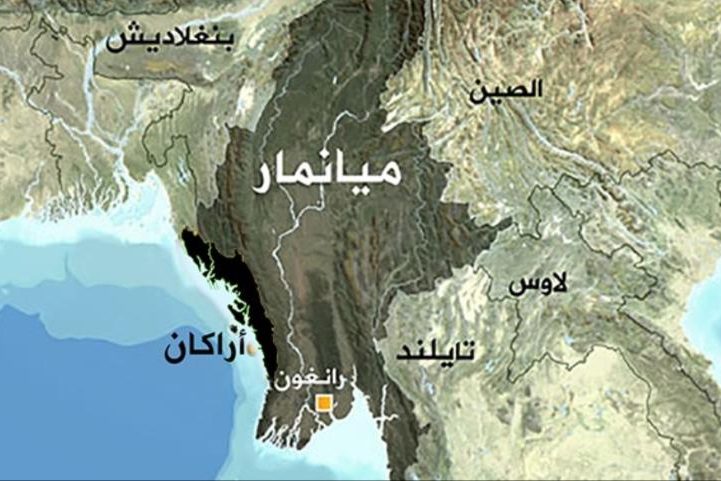
A law was also issued against the Rohingya in 1983, stipulating that anyone who could not prove that his family had lived in Myanmar before 1844 would be deprived of Burmese citizenship, leaving hundreds of thousands of Muslims without citizenship or political or social rights.
The Rohingya continue to suffer injustice and persecution. Tens of thousands of Muslims in Myanmar have been killed by the army and Buddhist militias led by extremist monks, their homes and mosques have been burned and they are prevented from exercising their religious freedom.
According to testimonies recorded by the Office of the High Commissioner for Human Rights, many cases of indiscriminate killing, enforced disappearance, rape, killing of children, looting and destruction of property and arbitrary arrests have been documented, all of which have led to hundreds of thousands fleeing to Bangladesh.
Malaysia, Thailand, Indonesia, India and the poor neighbor Bangladesh, are all destinations for Rohingya refugees, most of whom drown in the sea before completing the asylum journey, and survivors in some countries are subjected to arrests and threats of deportation, so they are described as refugees that no one wants them.
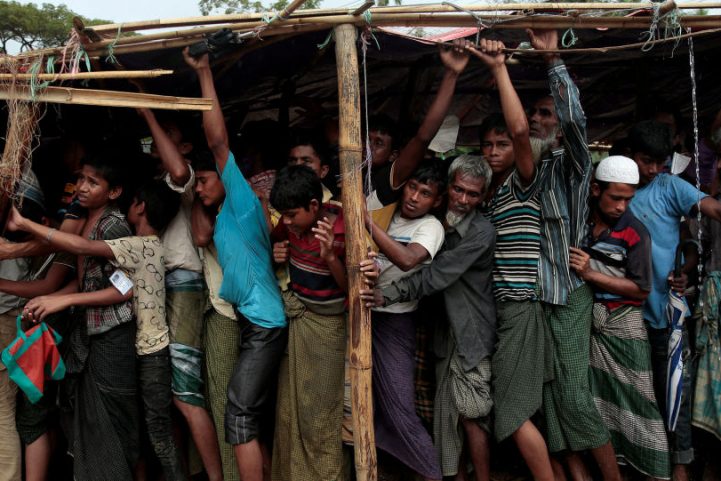
In India.. God “Rama” is victorious
India is a country inhabited by about one-sixth of the world’s population, with a population of 1.3 billion, and Muslims constitute about 14% of their total, or approximately 172 million people. They are the largest Muslim minority in the world, yet their representation in state institutions is very limited.
The history of the conflict between Hindus and Muslims in India dates back to the eighth century AD, that is, since Islam entered the Indian subcontinent. There is no doubt that the conversion of millions of Hindus to Islam during the period of Muslim rule left a feeling of bitterness and disappointment among many Hindus.
When British colonialism entered India, racial and sectarian conflicts began to increase, especially in light of Britain’s endeavor to provoke division and ethnic and sectarian conflicts between Muslims and Hindus (the two largest religious sects in India).
Britain has deliberately empowered Hindus at the expense of Muslims who have ruled India for centuries since the entry of Islam into the country.
After India gained its independence, Britain handed over power to the Hindus, excluding Muslims, which led to several clashes between the two parties, perhaps the most violent of which was the events in Assam in 1983, where Hindus killed more than 2,000 Muslims, most of them women and children, after many congestions in the region due to the influx of immigrants Muslims to Assam.
And do not forget the events of the Babri Mosque in 1992, when a gang of fanatical Hindus demolished the mosque, which sparked riots that resulted in nearly two thousand deaths.
After a long-running legal dispute with Muslims who demanded that the mosque be built again, the court ruled in favor of the Hindus to build a temple to the god Rama on the site of the mosque.
Today, Indian Muslims suffer discrimination in educational and cultural institutions, and members of this minority are classified as the poorest among the spectrum of Indian society. Due to the low average annual income of most members of the Muslim minority.
Therefore, it was not surprising that the clash erupted in India in December 2019 over a controversial bill that requires speeding up the procedures for obtaining Indian citizenship for all but Muslim asylum seekers.
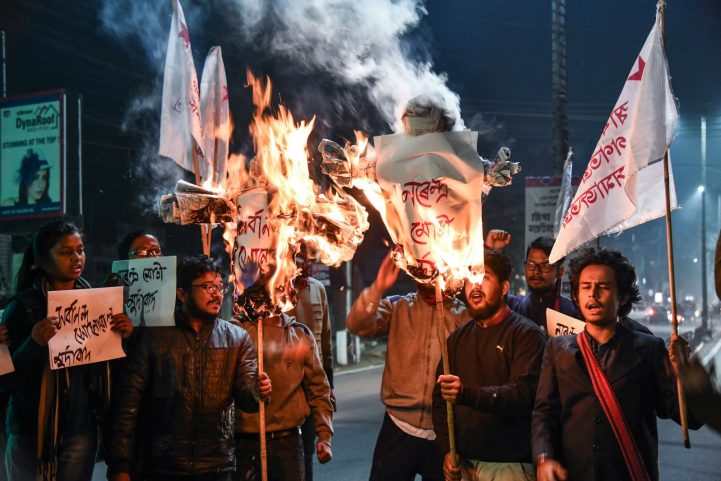
Detention Camps in China
In China, the Muslim minority is the second largest Muslim minority in Asia after India, accounting for 11% of China’s total population of 1.3 billion people, according to some statistics that say that the number of China’s Muslims exceeds 100 million.
The Muslims of China differ in their ethnic origins. Some of them are of Turkish origin, such as groups (Uyghurs, Kazakhs, Uzbeks, Tatars and others), and most of them live in East Turkestan and the surrounding areas.
Some of them are of Chinese origin, such as the Hui Hui group. As for the rest of the Muslim groups in China, they belong to separate races.
The roots of the suffering of Muslims in China go back to the seventeenth century, during the rule of the Manchurians who persecuted Muslim minorities and prevented them from practicing their religion.
Things changed when the national revolutionaries overthrew the Manchurian rule in 1910 with the help of Muslim minorities, after which Muslims regained part of their political rights and were able to practice their worship freely.
But after the communists took over the rule of China, things began to change for Muslims, and they began to gradually lose their religious freedoms.
At first the Chinese newspapers began to denounce the large number of mosques in China, then began a campaign to close these mosques and cancel pilgrims’ trips to Mecca, then the displacement of Muslims from areas of high Islamic density to other areas, then the situation escalated to the extent of hitting clerics in the streets and burning Quran and books Then the matter developed to the point of committing several mass massacres against Muslims.
Perhaps the most persecuted region is the oil-rich East Turkestan, which was an independent region before it was occupied by China in 1949, and called it Xinjiang or the Uyghur region.
Since then, the Muslims of the region have carried out several revolutions for independence from the Chinese government, the last of which was the 1966 revolution that was violently suppressed by the Chinese government, and resulted in the emigration of about 250 thousand to neighboring countries such as Uzbekistan and Afghanistan.
It has also implemented many arbitrary rulings, such as closing mosques, applying personal status laws that are not compatible with Islamic law, and prohibiting the use of Arabic letters in writing.
Today – as it is known – the Muslims of China are still suffering persecution, especially the Uyghurs whom China prevents from practicing their religious freedom and rituals of prayer and fasting, as well as preventing men from growing beards and women from wearing the veil, and tightening the noose on them, to the extent that they need security permits to move between villages.
In addition, more than a million Uighurs and other minorities are held in so-called rehabilitation camps in northwest China’s Xinjiang province, where they are subjected to political indoctrination, torture, beatings and food deprivation.
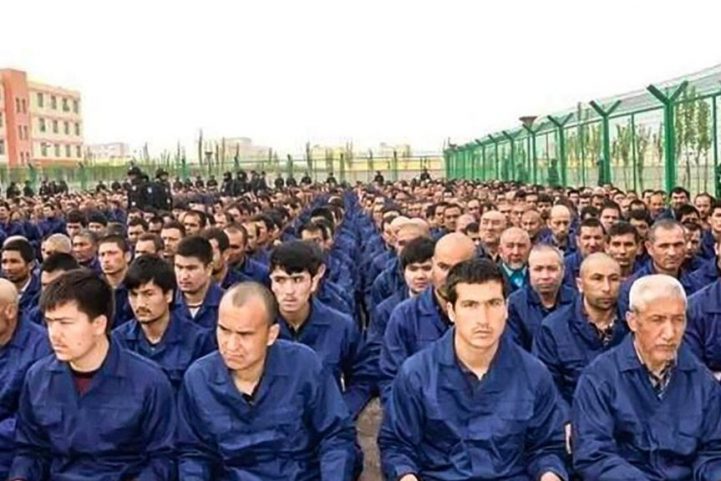
The conflict between Muslims and Orthodox in Russia
Muslims in Russia represent between 7% to 15% of the Russian population of 144 million, and Islam is the second largest religion in Russia after Christianity.
The history of Islam in Russia includes episodes of conflict between Muslims and the Orthodox majority, punctuated by periods of calm and harmony.
But we can say that the period that ranged from 1552 until the rise of Catherine II in 1762 witnessed a systematic Russian oppression of Muslims through policies of exclusion, discrimination, slaughter, expulsion, forced resettlement and attempts to obliterate Islamic identity by demolishing mosques and forced conversion to Christianity.
The conditions of Muslims improved after Empress Catherine II ascended the throne of Russia. She adopted the approach of religious tolerance and Muslims were allowed to build mosques and practice all their rituals, including the pilgrimage to Mecca, after it was forbidden.
But the Muslim minority in Russia returned to being classified among the persecuted minorities in the world in the nineteenth century, specifically between the years 1817-1864, after the outbreak of the Caucasus War, and the Russian Empire’s encroachment to occupy the Muslim regions of the North Caucasus, including the regions of Chechnya, Dagestan, the Karachay and Circassian regions (Adyghe, Abkhazia and Ubykh).
That war resulted in the Russians seizing the Muslim areas, killing them and displacing them to the Ottoman Empire.
As for under the communist rule, Muslims were not better off in Russia, as repression and persecution were practiced against them due to the conflict of Islamic thought with Marxist principles, and this lasted between 1922 and 1991.
The communists worked to obliterate Islamic monuments and prevent religious rites, such as the pilgrimage trips that were traveling from Russia to Mecca, and books written in Arabic were burned, Muslims were not allowed to hold positions in the state, and judicial bodies and Islamic schools were closed.
The former Soviet Union included 6 Muslim republics: Uzbekistan, Tajikistan, Turkmenistan, Kyrgyzstan, Kazakhstan and Azerbaijan.
As for the Russian Federation, it currently includes five Islamic republics: Dagestan, Bashkir, Tataria, Ajaria and Chechnya.
The Russian government deals with Muslims as a minority free to practice their religious rites, and although they were not persecuted as in the past, the government’s relations with the Muslim minority are still suspicious, as they are not treated in the same way as Orthodox Christians are treated in terms of political representation in the government and participation in the administration country.
Although the Russian government recognizes Islam as the second largest religion in the country, it fears the growth of political Islam in the region and is constantly working to curb it.
Brutal slaughter and burning of Muslims in Central Africa
The population of Africa is 4.4 million people, the majority of whom are Christians, while the proportion of Muslims is about 15% of them until 2012, when after this date the majority of Central African Muslims were displaced to escape war and persecution.
The crisis of Muslims in Central Africa began during the 2013 coup, when four Muslim militias allied themselves to overthrow the government, and were able to depose President Francois Bozize, and then declared its leader, Michael Djotodia, president of the country, under international condemnation.
However, Bozize, his own circle, and the dissolved army soon managed to recruit Christian counter-militia to restore power, and it was Muslim civilians who paid the price.
Two months later, hostilities erupted between the two sides, and tragically escalated when Christian forces attacked Muslim suburbs in the capital, Bangui, turning the war into targeting civilians on the basis of religious identity.
The killings that targeted Muslims were characterized by their extreme brutality, as Muslims were massacred, dismembered and burned in front of cameras, and the matter escalated to the point of genocide against Muslims.
As for the survivors, most of them fled outside the country, and, according to reports, 99% of the Muslims of the capital Bangui were displaced, while 80% of all Central African Muslims left for fear of death to Cameroon or Chad, and 417 mosques out of 436 were destroyed.
Today, in addition to the problems that the rest of the African population suffers from the spread of epidemics and diseases, especially AIDS and malaria, and severe educational shortcomings, Muslims, in particular, suffer from political marginalization as they are not entitled to participate in ruling the country. They also suffer from a lack of awareness of Islamic teachings and a scarcity of preachers. Qualified, in return for competition with missionary institutions that seek to attract large numbers of Muslims to Christianity.
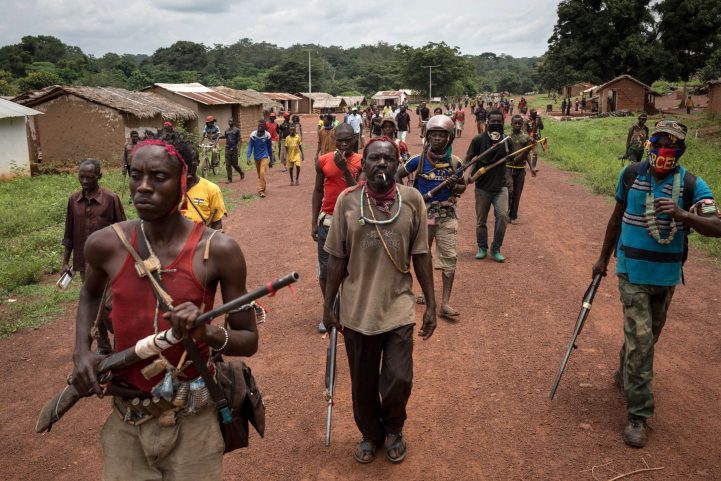
Attempts to demographic change threaten Muslims in the Philippines
While the population of the Philippines is 100,981,437, the Muslim minority has a population of about six million.
The Philippines is considered one of the oldest Asian countries that Islam entered at the hands of Arab Muslims, traders and preachers, and the Islamic rule in the region was consolidated until the Spanish occupation of the region contributed to the decline of this rule in the year 1899 AD.
Muslims were settling in the southern region of the Philippines, and dreamed of forming a state independent of colonialism, but the Spanish occupation left American colonialism that included the Muslim south to the north before declaring the country’s independence in 1946 AD.
This caused a feeling of injustice that prevailed among the Muslims of the south who were working for their independence, but the military clash did not begin until 1970 when the Muslims accused the Philippine government of supporting armed Christian groups.
Subsequently, the Moro National Liberation Front was established in 1972 to lead armed confrontations against the Philippine regime, and since then until now the Front’s attempts to obtain autonomy have not succeeded.
Aside from the armed clashes that resulted in the displacement of nearly two million Filipino Muslims to the neighboring Malaysian state of Sabah, the Muslim minority in the Philippines suffers from attempts at demographic change, as Muslims accuse the government of trying to displace Christians to the south to outnumber Muslims.
Muslims also suffer from a severe lack of educational and health services and political marginalization, as Muslims do not have any representatives in the government or judicial authorities.
Muslims and Buddhist extremism in Sri Lanka
Muslims in Sri Lanka constitute 10% of the total population of 21 million people, and suffer – as do Christians – the extremism and oppression of Buddhists who make up the majority in the country.
The arrival of Islam in Sri Lanka was linked to its arrival in India and the islands of Indonesia. The Muslims there faced many challenges as they were a minority, especially after the British colonialism, which made unremitting efforts to spread missionaries and convert people to Christianity in the region.
After independence, Muslims had representatives in the administration of the country along with other religions and races, but this did not protect the Muslims of Sri Lanka from persecution in any way.
The spread of several extremist Buddhist movements that find Muslims a threat to the Buddhist identity has contributed to the increase in violence in Sri Lanka, which has recently gone out of government control, including Muslim representatives.
Between 2012 and 2013, more than 350 violent attacks on Muslims were reported, and mosques were a primary target of these attacks.
After a brief period of calm, violence re-escalated in 2014, as Buddhists attacked Muslim-owned homes and shops, leaving people dead and injured.
On 5 March 2018, the Sri Lankan government imposed a state of emergency for 10 days, after riots and a wave of violence directed against Muslims in Kandy.
Extremist Buddhist groups claim to protect Buddhism, which is threatened by Muslim and Christian minorities alike.
Therefore, Buddhists resort to spreading fear among the local population, portraying minorities as threatening the Buddhist identity, and seeking to spread rumors that ignite hatred among Buddhists and other religions, such as that Muslims smuggle drugs, and promote birth control pills as part of a plan aimed at preventing the reproduction of Buddhists.
Hard-line Buddhist monks such as Ampetiti Sumana and organizations such as Maha Sohon Balakaya and Bodu Bala Sina are taking advantage of the fires of religious intolerance and hatred by inciting riots between the Buddhist and Muslim communities.
Buddhist “village monks” often lead attacks on religious minorities, and are said to be mere Buddhist thugs dressed as monks, but none of them have yet been held accountable.
Sunna Files Free Newsletter - اشترك في جريدتنا المجانية
Stay updated with our latest reports, news, designs, and more by subscribing to our newsletter! Delivered straight to your inbox twice a month, our newsletter keeps you in the loop with the most important updates from our website












